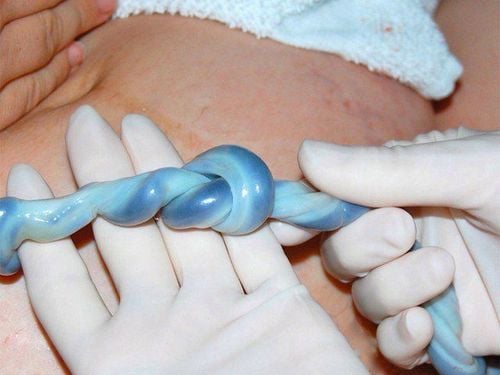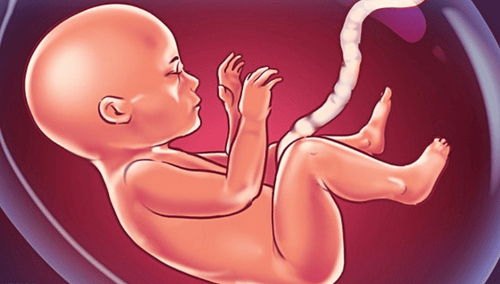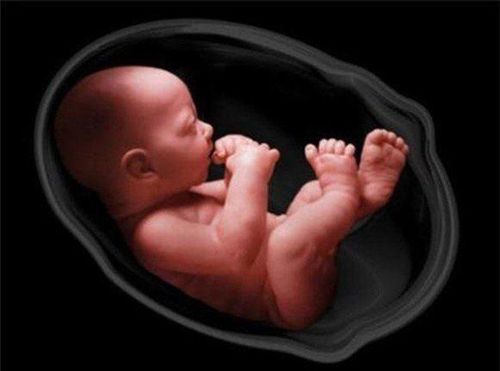This is an automatically translated article.
The article was written by Master, Doctor Nguyen Nhu Thu Truc - Department of Obstetrics and Gynecology - Vinmec Nha Trang International General Hospital.The state of fetal failure can lead to the risk of stillbirth in the womb or dangerous complications of the brain due to lack of oxygen in the brain such as epilepsy, language retardation,... Below, MSc.BS Nguyen Nhu Thu Truc, an obstetrician and gynecologist at Vinmec Nha Trang hospital, will point out the causes and signs of pregnancy failure so that women can recognize and minimize these risks.
1. First of all, what is pregnancy failure? Fetal failure is a condition in which the fetus is deprived of oxygen during pregnancy or during labor. Fetal failure is one of the dangerous problems, indicating that the fetus is not developing normally.
Includes 2 types:
Chronic fetal distress: Occurs slowly and without obvious symptoms, can turn into acute fetal distress during labor. Acute Fetal Failure: Sudden onset during labor. Acute fetal failure is very dangerous, if not treated promptly, the fetus will experience brain complications, even death.

Trắc nghiệm: Chỉ số tiểu đường thai kỳ nguy hiểm như thế nào đối với thai nhi?
Không chỉ ảnh hưởng xấu đến sức khỏe người mẹ, tiểu đường thai kỳ còn gây nguy hại đến sự phát triển của thai nhi. Cùng làm bài trắc nghiệm sau đây để hiểu rõ hơn về sự ảnh hưởng của tiểu đường thai kỳ đối với thai nhi như thế nào nhé!The following content is prepared under supervision of Bác sĩ chuyên khoa I, Lê Hồng Liên , Sản phụ khoa , Khoa Sản phụ khoa - Bệnh viện Đa khoa Quốc tế Vinmec Central Park
2.2 Causes of the fetus Premature pregnancy Premature pregnancy: A fetus past the due date often has a calcified placenta, the oxygen supply is interrupted, causing the fetus to fail. Anemia, infection, fetal malformations, growth retardation,... 2.3 Causes of fetal appendages Placenta previa, placenta previa, placental abruption, placental insufficiency, placenta calcification,... Umbilical cord is damaged Prolapse or knots or abnormalities of the umbilical cord are all causes of preventing oxygen from being transported to the fetus. Premature rupture of membranes: The amniotic sac is the living environment that surrounds the fetus. When the water breaks, reducing the protective volume around the fetus, during labor, uterine contractions can compress the fetal head or the umbilical cord, causing hypoxia. Therefore, if there is an early rupture of membranes, the doctor will make a plan to shorten the labor time.

If the amniotic fluid turns dark yellow During pregnancy, it means that the fetus has chronic fetal failure, the mother needs to be treated immediately. If the amniotic fluid is blue, the pregnant mother has signs of fetal distress. In this case, the mother needs to be closely monitored, and depending on the status of the fetal heart, the stage of labor, the doctor will have appropriate treatment for the mother and the fetus. If there is meconium in the amniotic fluid, the pregnant mother will be at high risk of acute fetal distress during labor. This case also needs to be handled quickly, to avoid aspiration of meconium when the fetus is born.
3.2 Fetal heart beat irregularly The lack of oxygen during fetal failure will affect the fetal heart beat, leading to the fetal heart rate sometimes beating fast, sometimes beating slowly, sometimes over 160 times/minute, sometimes it goes below 100 times/minute. This sign will be checked most accurately when pregnant women have regular antenatal checkups, so ultrasound and fetal heart rate monitoring are the best ways to detect early signs of fetal distress.
3.3 Fetal movement disorder The fetus has abnormal movements, sometimes kicking hard and a lot, but sometimes pedaling slowly and the movement becomes less and less. If the fetus does not move for a long time, it is likely that the fetus is stillborn.
The mother can monitor the fetal movements by lying still on the bed, counting enough fetuses to have 4 movements in 30 minutes, showing that the fetus is still healthy. On the contrary, if within 4 hours, the fetus has less than 10 movements, the mother needs to go to the antenatal clinic immediately to check the status of the fetus.
Signs of fetal distress are often not obvious, so the most accurate way to determine is through ultrasound. Therefore, in order to know the best condition, pregnant women should regularly monitor and count fetal movements regularly, 3 times a day. At the same time, regular visits to the hospital to ensure that the fetus is safe and healthy.

Especially, with the package "Maternity package" at Vinmec General Hospital, mothers are comprehensively monitored and ultrasounded from pregnancy to childbirth and postpartum, making childbirth comfortable and light. softer.
For specific information about the package of fertility and maternity examination at Vinmec, customers please contact the hospitals and clinics of Vinmec health system nationwide or register directly on the website.
Please dial HOTLINE for more information or register for an appointment HERE. Download MyVinmec app to make appointments faster and to manage your bookings easily.















